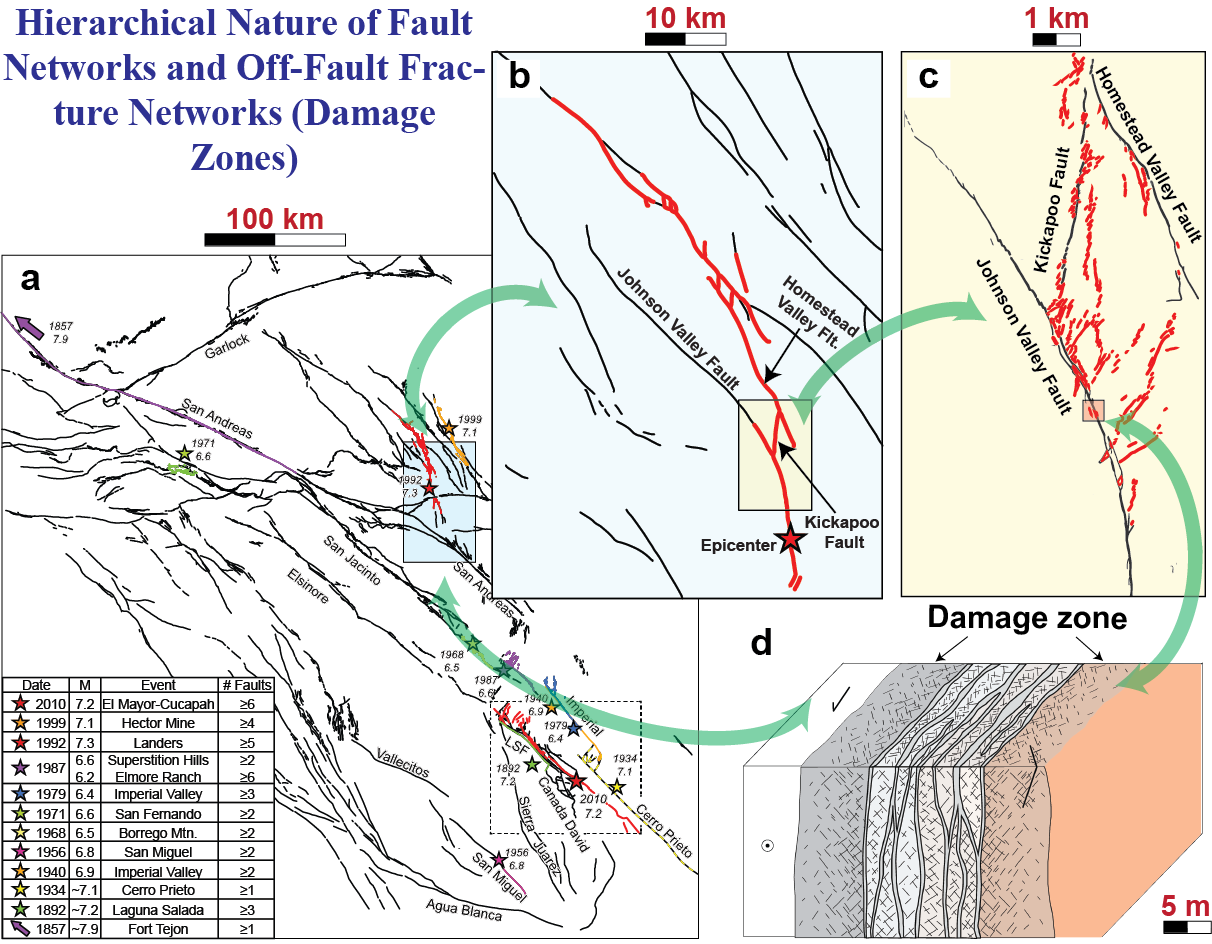 Hierarchical structure of fault networks, activated during a single earthquake rupture, over a wide range of length scales.
Hierarchical structure of fault networks, activated during a single earthquake rupture, over a wide range of length scales.
Quantum leaps in observations have recently upended our classical view of earthquakes & tsunamis and have demonstrated that our understanding of these destructive natural events is not unified and still too limited to perform reliable predictions. Fortunately, catastrophic events remain relatively rare. Yet this scarcity also implies that their fine scale and long-term dynamics can only be studied in detail through numerical simulations.
The goal of PERSISMO is to build a physics-based Virtual Earthquake Simulator to make seismic and tsunami hazard estimates on fault networks. Indeed, the modern view emanating from observations is that fault networks continuously release stored energy over a wide range of spatiotemporal scales. With this philosophy in mind, we have been developing simulation tools to capture the behaviour of these fault networks and our recent work has demonstrated that these networks indeed control the dominant portion of the continuous energy release, whatever the time and length scales considered.
Within PERSISMO, we will build a physics-based framework, which will include all known physical contributions to dynamic fracturing. This will unify a never achieved range of spatiotemporal scales, from meters to hundreds of kilometres, seconds to millenniums. Using available data and catalogues, our results will be validated along natural fault networks to capture slow and fast seismic energy release. Building on this, we will develop a Machine Learning based framework to run millions of ensemble and future hazard scenarios on a given fault network. Only then, we might be able to make reliable predictions about their behaviour in the future.
Our project to build a physics-driven Virtual Earthquake Simulator is interdisciplinary by nature, as it must combine expertise in mechanics, earth sciences and computation. In the long-term, our simulator will have the potential to become key in helping decision makers on possible natural hazard scenarios.